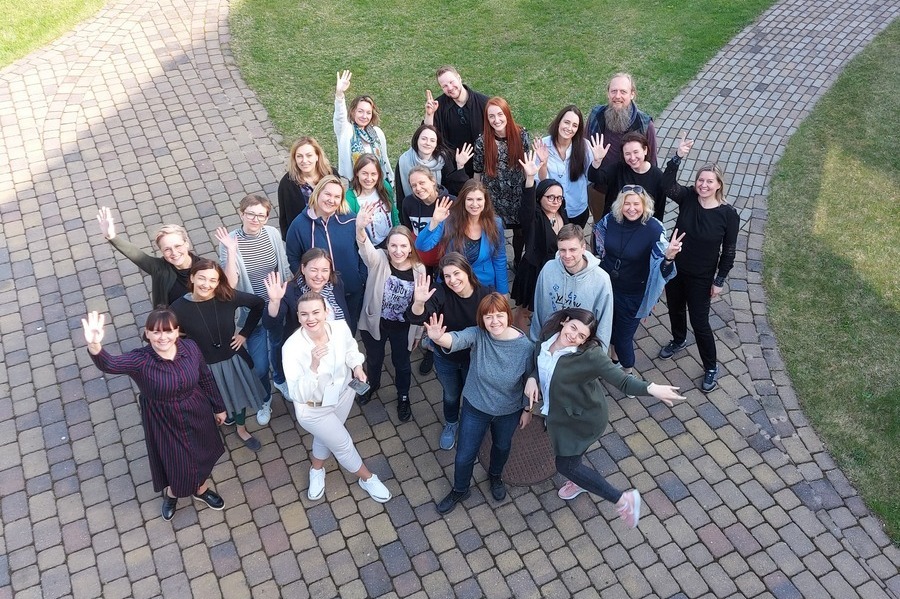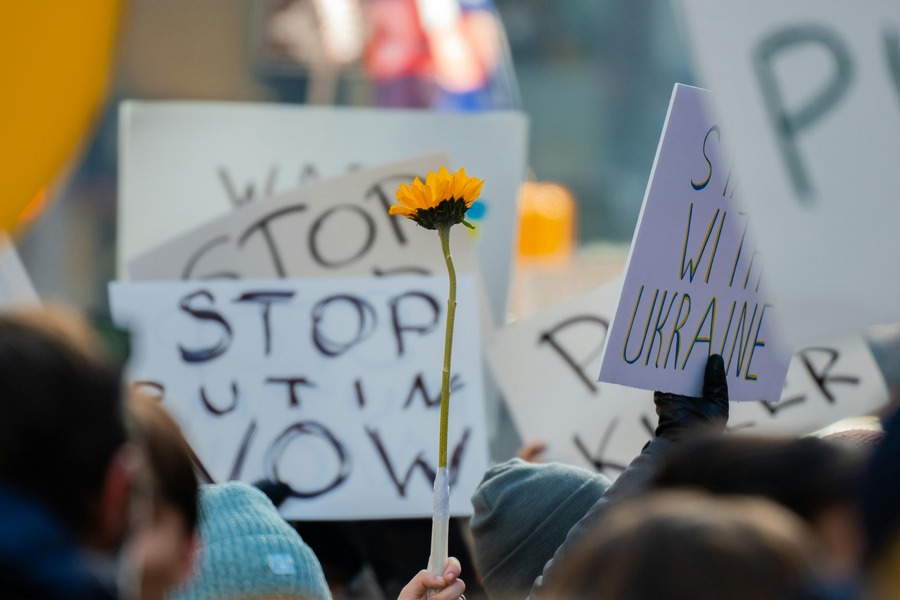
Harriet Jones-Day: Philanthropic psychology – what is it & what can it offer?
January 18, 2023
Giedrė Šopaitė-Šilinskienė: Developing fundraising competencies – a case study from Lithuania
February 22, 20232022 was another challenging year for fundraisers. Now, at the start of the new year, we take a look at what 2023 might hold, speaking to fundraising experts around Europe to hear how the next 12 months are looking for nonprofits in their country, and what they’re doing in response.
After the pandemic years of 2020 and 2021, most of us had higher hopes for 2022. Yet once again, it was a year beset with challenge, with Russia’s invasion of Ukraine and the escalating cost of living crisis impacting citizens and nonprofits across Europe.
So what can we expect from 2023?
Certainly, across many countries in Europe, nonprofits will continue to be challenged by the impact of the Ukraine war and cost of living crisis on citizens’ – and their own – finances. And on top of this, as always, will come other challenges, as well as opportunities. After the last few years however, fundraisers certainly know to be prepared for any eventuality.

Jan Gregor, Coalition for Easy Giving, & EFA vice president
Jan Gregor, from the Czech Republic’s Coalition for Easy Giving, and EFA’s vice president says:
“If anything, recent years have shown us that there is no such thing as certainty. As a result, as well as in response to the strange mixture of energy crisis, inflation and uncertainty of peace in general that we face across Europe, we must be ready for anything.”
Responding to increasing demand – & decreasing income
A common concern voiced among fundraisers across Europe is how much the ongoing crises will affect donation levels and the need for their organisation’s services this year. According to the 2022 Nonprofit Pulse report, released today (18 January), 32% of the 658 nonprofit representatives surveyed saw individual giving decrease across 2022. At the same time, more than a third saw demand for their services rise.
Jeroen Brugge, Fundraisers Alliance Belgium board member and senior consultant on fundraising and marcom strategy at Strategies & Leaders, says it is clear that the problems faced in 2022 aren’t going away, with Belgian nonprofits amongst those fearing a drop in donations as a result. In Belgium, he says, this will lead to a greater focus on the donor experience, on successfully communicating impact, and further experimentation with digital to better engage supporters. In addition, with less funding likely to come from the government, Brugge expects to see a greater emphasis this year on finding private funding.
He says:
“More and more organisations will feel the effects of a retreating government and turn to the private market to find funding. There will be more people at the table for a cake that won’t get any bigger. And, with organisations fearing a drop in donations due to the crisis context, the donor’s giving experience and the extent to which donors are personally involved will only grow in importance. Those who demonstrate direct impact win the race.”
It’s a familiar story elsewhere in Europe. In Finland for example, rising costs are also expected to be an issue, impacting organisations’ financial outlay as well as donations. On top of this, the sector here will have to deal with the upcoming reform of the country’s public funding system.
Pia Tornikoski, secretary general of Finnish fundraising association VaLa, comments:
“2022 was again an exceptional year, this time because of the Ukraine crisis. Those charities that are giving aid to Ukraine or helping Ukrainians in Finland will have raised a record amount of funds, and as a result other charities probably will not have managed to reach their fundraising goals. On the other hand, Finns seem more generous to all kind of causes.
“In 2023, the rise in costs that started in 2022 will continue to affect both organisational costs and the ability to donate. The reform of the public funding system will also impact the Finnish nonprofit sector’s funding and fundraising.”
In the UK, 2023 is also expected to be a difficult year for fundraising, with a ‘perfect storm’ of challenges impacting nonprofits. Maintaining income will be the achievement this year, says John Green, fundraising manager at Jesuits in Britain. He adds:

John Green, fundraising manager, Jesuits in Britain
“The perfect storm of ongoing war in Ukraine driving energy and cost of living costs, tailwinds from Brexit, possibilities of new Covid variants from China and a battered stock market all mean that donors and trusts have less capacity to give and may well defer giving decisions until after 2023. The two bright spots are legacy giving and a government reversal of a decision to cut Gift Aid.”
Yet despite all these challenges, of the 658 people across 30 nations surveyed for the Nonprofit Pulse report only 10% said they were cutting back on services. 1 in 7 said they were increasing their service delivery to meet needs.
Emphasis on supporter relationships
To cope, nonprofits are again focusing hard on finding ways to keep donors close, costs down, and services running – and plan to continue doing so throughout 2023.
And it’s this approach, fundraisers agree, that will really make a difference to an organisation’s ability to survive and thrive this year. Facing increasing pressure themselves, donors for example will need to be kept close so that those who can continue to support, want to do so. Focusing on strengthening this relationship then will be essential to ensuring they feel part of the organisation, and understand how their donations help.
Gregor says:
“The difficulties of the past few years have shown us, like never before, that fundraising success affects not only the finances and philanthropy of our countries’ citizens, but equally the capabilities and capacities of CSOs themselves. So, more than ever, the CSOs that are successful in 2023 will be those able to build and maintain strong relationships with their supporters and with strong organisational cultures that are oriented towards impact, accountability, communication and maybe just as importantly: towards finding ways to achieve their impact collaboratively.”
How well nonprofits communicate both with supporters and the public will be critical to fundraising success in 2023, agrees Swissfundraising director Roger Tinner. In Switzerland, he says:
“Although Switzerland is less affected by inflation compared to the rest of Europe, many people are likely to face the question of how to allocate their budgets in the face of rising prices and rents in the new year. When it comes to fundraising, it is therefore even more important to show that solidarity is particularly important in difficult times.”
And in fact, the Nonprofit Pulse survey shows, many are doing just that. 35% said they were focusing on supporter retention, and 31% on creating engaging communications that inspire regular giving and long-term loyal support. Despite the financial challenges, almost a quarter of respondents said their organisations intend to invest more in fundraising, marketing and communications this year. Organisations are also looking to the future to build security and resilience, with 17% increasing their focus on legacy fundraising.
Time to adapt & innovate
The innovation and agility shown throughout the past three years will also continue to be essential this year as nonprofits strive to find new avenues for reaching supporters and deepening relationships. 2022 saw 38% of Nonprofit Pulse respondents increase their use of digital, and many are also ramping up their use of more traditional channels to both find and communicate with supporters.
In Spain for example, the second half of last year saw the impact of the energy crisis driving more organisations to focus on managing donor loyalty. And, after two years of the pandemic’s limitations, Spanish nonprofits were also focusing on putting their fundraising channels in order, with more F2F activity and a consolidation of telemarketing.
Now, Fernando Morón, director of the Spanish Fundraising Association, notes:
“The main challenge in 2023 is fundraising innovation. Organisations have to innovate with collaboration models, channels and messages. Spain needs to rejuvenate its donor base. The average age of the donor is increasing and it is necessary to connect organisations with younger audiences.”
Increasing collaboration
Across Europe, nonprofits are also considering greater collaboration in response to the challenges and to ensure services can continue to be delivered, and impact achieved. This is certainly something more nonprofits should be looking at and not just within the sector itself, says Dr. Josephine Sundqvist, secretary-general of LM International, which is headquartered in Sweden.

Dr. Josephine Sundqvist, secretary-general of LM International
She comments:
“To meet the increased needs we see in the light of the global climate, security and health crisis, new innovative partnerships across sector boundaries are required. Everyone should be involved: academia, the public and nonprofit sector, as well as the business world. In 2023, we will see more civil society actors financing activities by selling goods and services, and more business actors with a clearer democratic and sustainability agenda. To deal with the major social challenges, both in Sweden and the world around us, adaptation and a rapprochement with other sectors is required.”
In addition, with donors increasingly looking for a level of impact and scalability in projects that can only be realised through greater collaboration between civil society and the private sector, she says:
“Nonprofits who understand the embedded power of innovative partnerships and the quadruple helix model will come out as winners in terms of securing both long-term and sustainable funding.”
Overall then, the top tips for getting through the year ahead can be summarised as follows:
- Be prepared for anything
- Strengthen your supporter relationships
- Focus on your impact, accountability, and communication
- Look at where collaborating with others – both inside and outside of the sector – offers advantages
While it may be another year of challenges, what’s certain is that over the last three years Europe’s nonprofits have already shown just how agile they are in the face of difficulty. And now they are firmly focused on getting through the crisis conditions that look set to continue well into 2023.
Picture by Arek Socha from Pixabay.




